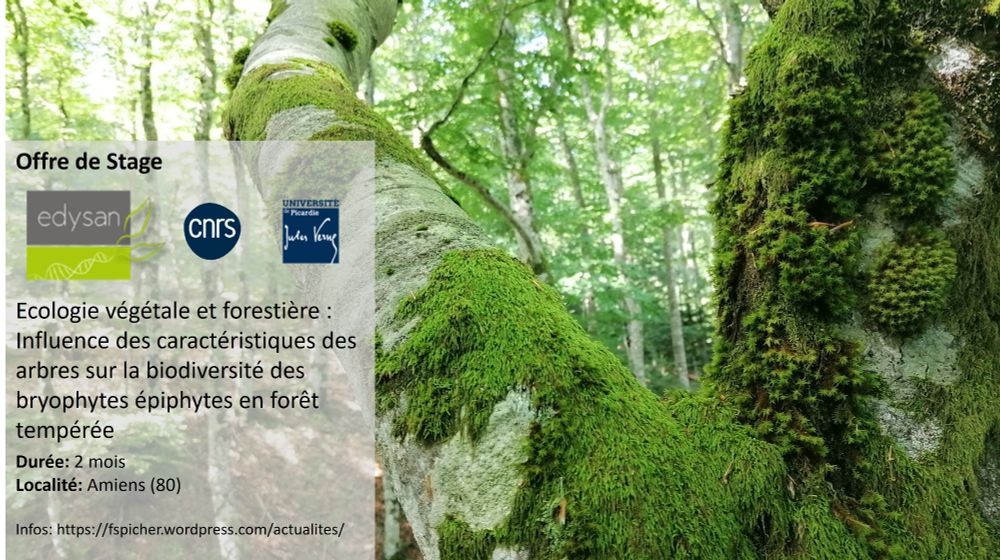
Senior researcher @CNRS (EDYSAN) @UPJV, Amiens, France #PhD in #forest #sciences 🌳🌲🌴 I study #biodiversity #plant #species #redistribution #microclimate #ecology #biostatistics #climatechange #BioShifts I don't wear 👨🔬 & never used a 🧪, yet I'm a scientist .. more
Senior researcher @CNRS (EDYSAN) @UPJV, Amiens, France #PhD in #forest #sciences 🌳🌲🌴 I study #biodiversity #plant #species #redistribution #microclimate #ecology #biostatistics #climatechange #BioShifts I don't wear 👨🔬 & never used a 🧪, yet I'm a scientist
Ecologie et Dynamique des Systèmes Anthropisés; Université de Picardie Jules Verne; Centre National de la Recherche Scientifique • Species Distribution and Climate Change, Ecology and Vegetation Dynamics Studies, Plant and animal studies
Zoom link:
us06web.zoom.us/j/8295073328...
Secret key:
486426
Reposted by Jonathan Lenoir

Lise Conte and Jonathan Lenoir will present the work of the #BIOSHIFT group:
👉 Global redistribution of biodiversity
Zoom : us06web.zoom.us/j/8295073328...
key : 486426
@jonlen.bsky.social @frbiodiv.bsky.social
🌐🧪🌍🦤🦑🪴🍁
Reposted by Billur Bektaş

CESABINAR #12
Find the Zoom link on the webpage of #FRB below & attend 😊
shorturl.at/p7J2R
@frbiodiv.bsky.social
🧪🌐🌍🌎🌏🏔⛰️🗻

Microclimats des ripisylves 🌳💧🌳
shorturl.at/lYeJg
Reposted by Jonathan Lenoir

L'unité #EDYSAN propose un stage s’intéressant à l'influence des caractéristiques des arbres sur la biodiversité des bryophytes épiphytes en forêt tempérée.
#bryologie #mousses #forêt #écorce #microclimat
Plus d'information: tinyurl.com/m2sp4zfr
Reposted by Brian J. Enquist, Francis Martin, Jonathan Lenoir

Toutes nos félicitations à Frédéric Thomas (UMR Mivegec), Sylvain Gandon (UMR Cefe) et Jonathan Lenoir (UMR Edysan) ! 🥳
www.inee.cnrs.fr/fr/cnrsinfo/...
Reposted by Jonathan Lenoir

Reposted by Jonathan Lenoir, Karen De Pauw, Julen Astigarraga

👇
Read the full paper from: www.nature.com/articles/s41...

@academiesciences.bsky.social
Reposted by Jonathan Lenoir

Reposted by Ingolf Kühn, Joan Dudney

🌐🌏🌎🌍🧪🐠🐍🦋🦉🦇🌳🌲
shorturl.at/prp63
Reposted by Jonathan Lenoir
#proud #supervisor
@evagril.bsky.social
@upjv-univ.bsky.social

Merci Jonathan !!

